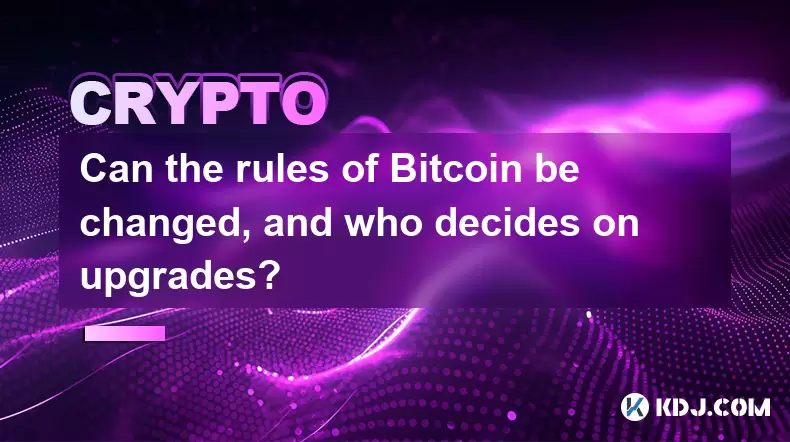-
 Bitcoin
Bitcoin $113900
-1.39% -
 Ethereum
Ethereum $3517
-4.15% -
 XRP
XRP $3.009
1.59% -
 Tether USDt
Tether USDt $0.9997
-0.04% -
 BNB
BNB $766.8
-1.41% -
 Solana
Solana $164.6
-2.38% -
 USDC
USDC $0.9998
-0.02% -
 TRON
TRON $0.3277
0.65% -
 Dogecoin
Dogecoin $0.2023
-1.67% -
 Cardano
Cardano $0.7246
0.05% -
 Hyperliquid
Hyperliquid $38.27
-4.77% -
 Sui
Sui $3.528
-0.52% -
 Stellar
Stellar $0.3890
-0.73% -
 Chainlink
Chainlink $16.16
-2.69% -
 Bitcoin Cash
Bitcoin Cash $539.9
-4.38% -
 Hedera
Hedera $0.2425
-2.00% -
 Avalanche
Avalanche $21.71
-0.97% -
 Toncoin
Toncoin $3.662
5.73% -
 Ethena USDe
Ethena USDe $1.000
-0.02% -
 UNUS SED LEO
UNUS SED LEO $8.964
0.35% -
 Litecoin
Litecoin $107.7
2.33% -
 Shiba Inu
Shiba Inu $0.00001223
-0.40% -
 Polkadot
Polkadot $3.617
-0.97% -
 Uniswap
Uniswap $9.052
-2.49% -
 Monero
Monero $295.1
-3.79% -
 Dai
Dai $0.9999
0.00% -
 Bitget Token
Bitget Token $4.315
-1.85% -
 Pepe
Pepe $0.00001060
0.11% -
 Cronos
Cronos $0.1342
-2.72% -
 Aave
Aave $256.0
-0.87%
What is the difference between holding Bitcoin on an exchange versus in a personal wallet?
Holding Bitcoin on an exchange means trusting a third party with your keys—true ownership comes only when you control your private keys via a personal, non-custodial wallet.
Aug 02, 2025 at 03:15 pm

Understanding Custodial vs Non-Custodial Control
When holding Bitcoin on an exchange, users are essentially entrusting their assets to a third party. Exchanges operate as custodial services, meaning they maintain control over the private keys associated with user funds. This setup allows the exchange to manage transactions, withdrawals, and security protocols on behalf of the account holder. In contrast, storing Bitcoin in a personal wallet—also known as a non-custodial wallet—gives the individual full control over their private keys. This distinction is critical because private keys are the sole mechanism for authorizing Bitcoin transactions. If a user does not possess their private keys, they do not have full ownership of their Bitcoin, regardless of what their account balance shows.
Security Implications of Exchange Storage
Exchanges are high-value targets for hackers due to the concentration of digital assets. Numerous high-profile breaches—such as the Mt. Gox and Bitfinex incidents—demonstrate the risks involved. Even with advanced security measures like two-factor authentication (2FA) and cold storage for reserves, exchanges remain vulnerable to phishing attacks, insider threats, and system exploits. When Bitcoin is held on an exchange, the user’s funds are part of a shared pool, increasing systemic risk. In the event of a platform shutdown, bankruptcy, or regulatory freeze, access to funds may be suspended indefinitely. Conversely, a personal wallet—especially a hardware or air-gapped device—reduces exposure to online threats. The security of a personal wallet hinges on the user’s ability to safeguard recovery phrases and private keys.
Accessibility and Convenience Factors
One of the primary advantages of keeping Bitcoin on an exchange is immediate liquidity and trading access. Users can swiftly buy, sell, or trade assets without initiating blockchain transfers. This is particularly beneficial for active traders who rely on fast execution. Exchanges often provide integrated tools for charting, limit orders, and portfolio tracking. In contrast, using a personal wallet requires additional steps to move funds back to an exchange before trading, which introduces delays and transaction fees. However, this friction also serves as a protective measure, discouraging impulsive decisions. For long-term holders, the slight inconvenience of managing a personal wallet is outweighed by the assurance of direct asset control.
Setting Up and Using a Personal Wallet
To transition Bitcoin from an exchange to a personal wallet, users must follow specific procedures. First, select a reputable wallet provider such as Electrum, Ledger, or Trezor. Download the software or unbox the hardware device, ensuring it comes from an official source to avoid tampered versions. During setup, the wallet will generate a 12- or 24-word recovery phrase. This phrase must be written down and stored securely—never digitally—as it is the only way to restore access if the device is lost. After setup, navigate to the wallet’s receive section to generate a Bitcoin address. This address is a unique string of characters starting with “1”, “3”, or “bc1”. Copy this address carefully and use it as the withdrawal destination on the exchange platform.
On the exchange, go to the withdrawal section, select Bitcoin (BTC), and paste the personal wallet address. Double-check the address for accuracy, as blockchain transactions are irreversible. Enter the amount to transfer and confirm the withdrawal using 2FA if enabled. The transaction will be broadcast to the Bitcoin network and confirmed in one or more blocks. Monitor the status using a blockchain explorer by searching the transaction ID (TXID). Once confirmed, the Bitcoin will appear in the personal wallet.
Risks of Mismanagement in Personal Wallets
While personal wallets eliminate third-party risks, they introduce user-dependent vulnerabilities. Losing the recovery phrase or private key results in permanent loss of funds, with no recovery option. Physical damage to hardware wallets, forgotten PINs, or accidental exposure of seed phrases can all lead to inaccessible assets. Users must also guard against malware that can intercept keystrokes or clipboard data when sending transactions. To mitigate these risks, store the recovery phrase in a fireproof and waterproof safe, use a hardware wallet for large holdings, and avoid connecting devices to untrusted computers. Regularly test the recovery process in a safe environment to ensure the backup is functional.
Fees, Transaction Control, and Privacy
When Bitcoin is held on an exchange, users have limited control over transaction details. Withdrawals are processed at the exchange’s discretion, including the fee rate and timing. Some platforms batch withdrawals to reduce costs, which may delay fund availability. In a personal wallet, users can customize transaction fees based on network congestion, choosing between faster confirmation (higher fee) or lower cost (longer wait). This control is crucial during peak network usage. Privacy is also enhanced with personal wallets, as each transaction can use a new address, reducing traceability. Exchanges often reuse deposit addresses or link multiple transactions to a single identity, weakening financial privacy.
Frequently Asked Questions
Can I recover Bitcoin if I lose my hardware wallet but have the recovery phrase?
Yes, the recovery phrase allows you to restore your wallet on any compatible device. Simply initiate the recovery process on a new hardware or software wallet, enter the phrase in the correct order, and your Bitcoin balance will reappear. Ensure the phrase is accurate and entered on a trusted, secure device.
What happens to my Bitcoin if an exchange gets hacked?
If an exchange is compromised and user funds are stolen, there is no guarantee of reimbursement. Some exchanges have insurance funds, but coverage is often limited. Customers may receive partial compensation or platform tokens, but full recovery is rare. This underscores the risk of leaving Bitcoin on custodial platforms.
Is it safe to store my recovery phrase in a password manager?
Storing a recovery phrase in a digital format—even in an encrypted password manager—increases the risk of exposure to malware or data breaches. The safest method is physical storage on metal or paper, kept in a secure, offline location. Digital storage should be avoided unless using a highly specialized, air-gapped encrypted system.
Can I use the same Bitcoin address from my personal wallet multiple times?
While technically possible, reusing a Bitcoin address reduces privacy and makes transaction history easier to track. Best practice is to generate a new receiving address for each incoming transaction. Most modern wallets do this automatically, enhancing security and anonymity.
Disclaimer:info@kdj.com
The information provided is not trading advice. kdj.com does not assume any responsibility for any investments made based on the information provided in this article. Cryptocurrencies are highly volatile and it is highly recommended that you invest with caution after thorough research!
If you believe that the content used on this website infringes your copyright, please contact us immediately (info@kdj.com) and we will delete it promptly.
- Worldcoin, Identity, WLD Price: Decoding the NYC Crypto Buzz
- 2025-08-02 21:10:12
- Shiba Inu: Utility and Community Strength Drive Crypto's Evolution
- 2025-08-02 21:50:12
- Crypto Donations, Trump PAC, and Bitcoin: A New York Minute on Political Coin
- 2025-08-02 20:30:12
- Crypto Market Under Pressure: Bearish Momentum and Rising Volatility Take Hold
- 2025-08-02 20:30:12
- Crypto Market Carnage: Liquidations Soar as Ethereum and Bitcoin Take a Beating
- 2025-08-02 21:55:12
- DeFi Token Summer Gains: Is Mutuum Finance the Real Deal?
- 2025-08-02 18:30:12
Related knowledge

What is the difference between holding Bitcoin on an exchange versus in a personal wallet?
Aug 02,2025 at 03:15pm
Understanding Custodial vs Non-Custodial ControlWhen holding Bitcoin on an exchange, users are essentially entrusting their assets to a third party. E...

Can governments shut down or ban Bitcoin?
Aug 02,2025 at 09:44am
Understanding Bitcoin’s Decentralized StructureBitcoin operates on a decentralized peer-to-peer network, meaning it is not controlled by any single en...

Can the rules of Bitcoin be changed, and who decides on upgrades?
Aug 02,2025 at 06:36am
Understanding Bitcoin's Governance ModelBitcoin operates without a central authority, which means no single entity has the power to unilaterally chang...

Who controls the Bitcoin network if there is no central company or bank?
Aug 02,2025 at 06:01pm
Understanding Decentralized Control in BitcoinThe Bitcoin network operates without a central authority, which raises the question of who controls it. ...

What is Bitcoin, and how does it function as a digital currency?
Aug 02,2025 at 04:01am
Understanding Bitcoin as a Digital CurrencyBitcoin is a decentralized digital currency that operates without the need for a central authority such as ...

What is the significance of the 21-week EMA in a Bitcoin bull market?
Jul 10,2025 at 06:56pm
Understanding the 21-Week EMA in Cryptocurrency AnalysisThe 21-week Exponential Moving Average (EMA) is a technical indicator widely used by traders a...

What is the difference between holding Bitcoin on an exchange versus in a personal wallet?
Aug 02,2025 at 03:15pm
Understanding Custodial vs Non-Custodial ControlWhen holding Bitcoin on an exchange, users are essentially entrusting their assets to a third party. E...

Can governments shut down or ban Bitcoin?
Aug 02,2025 at 09:44am
Understanding Bitcoin’s Decentralized StructureBitcoin operates on a decentralized peer-to-peer network, meaning it is not controlled by any single en...

Can the rules of Bitcoin be changed, and who decides on upgrades?
Aug 02,2025 at 06:36am
Understanding Bitcoin's Governance ModelBitcoin operates without a central authority, which means no single entity has the power to unilaterally chang...

Who controls the Bitcoin network if there is no central company or bank?
Aug 02,2025 at 06:01pm
Understanding Decentralized Control in BitcoinThe Bitcoin network operates without a central authority, which raises the question of who controls it. ...

What is Bitcoin, and how does it function as a digital currency?
Aug 02,2025 at 04:01am
Understanding Bitcoin as a Digital CurrencyBitcoin is a decentralized digital currency that operates without the need for a central authority such as ...

What is the significance of the 21-week EMA in a Bitcoin bull market?
Jul 10,2025 at 06:56pm
Understanding the 21-Week EMA in Cryptocurrency AnalysisThe 21-week Exponential Moving Average (EMA) is a technical indicator widely used by traders a...
See all articles

























































































